Since the birth of the first panda, for more than a century, through the joint efforts of Chinese and foreign scholars, discoveries have been made continuously, resulting in a continuous increase in the number of panda family members. It has been passed down for six generations so far.
1. The First Panda
The discovery of the original panda was a major event in the "Historical Records" of the panda. It not only proves that the ancestors of pandas are in China, but also pushes forward the evolutionary history of pandas by nearly 1 million years.
The original panda is so amazing, so how was it discovered?
Discovery of Ailurarctos lufengensis
In the 1970s, coal miners in Yunnan's Lufeng Basin discovered a large number of vertebrate fossils while working in a lignite mine in Shihuiba Village, 9 kilometers away from Lufeng County. After learning about it, the Institute of Vertebrate Paleontology and Paleoanthropology of the Chinese Academy of Sciences sent personnel to investigate in 1978. With the help of coal miners, the investigators saw animal fossils from the coal seams. Not only that, they also collected ancient ape fossils from the coal seams. Due to the great significance of this discovery, the Institute of Vertebrate Paleontology and Paleoanthropology of the Chinese Academy of Sciences has carried out many years of excavations at the fossil site since 1978, and has obtained a large number of vertebrate fossils. It is particularly worth mentioning the discovery of ancient ape skulls, Mandibles, limb bones and some rare mammal fossils, including the Lufeng panda.
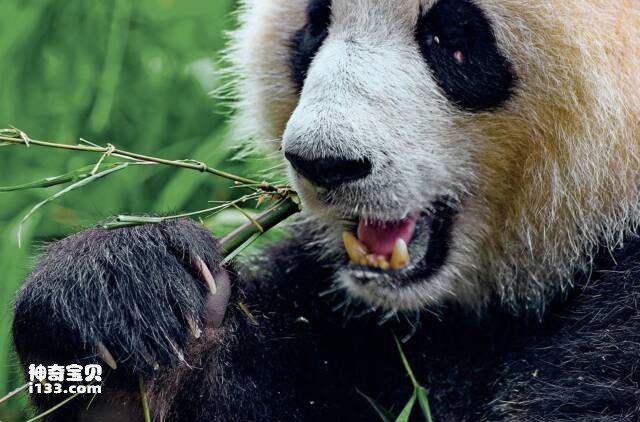
Lufeng panda fossil layers and their distribution on the section
In 1989, Wu Rukang and others made a thorough description of the strata and lithology of the Lufeng fossil origin, from top to bottom:
(8) Purple-red, orange-red, and yellow-brown sandy clay, thickness 0.8m
(7) Off-white, blue-gray clay, thickness 1.6m
(6) Thin layer of lignite, thickness 0.5m
(5) Gray fine sand layer, containing panda fossils, thickness 1.5-2.5m
(4) Thin layers of black carbonaceous clay and gray fine sand interbedded, thickness 0.2-1.8m
(3) Dark brown massive lignite layer, containing Eo-panda fossils, 0.3-1.4m thick
(2) Dark brown carbonaceous clay and gray fine sand interbedded, containing Eo-panda fossils, thickness 0.7-3m
(1) Yellow sandy clay, thickness 0.5-2m
In previous excavations, the Eo-Panda fossils unearthed in the above section include the following materials: 2 pieces from layer (2), the materials are the lower left fourth premolar and the lower left third molar. There are 12 pieces in layer (3). The materials are the upper left second premolar, the upper left third premolar, the upper left fourth premolar, the upper left first molar, the upper left second molar; the upper right fourth premolar, the upper right first molar, the upper right Second molar, lower right first molar, lower right second molar. There is one piece in layer (5), made of the upper right second molar.
The positioning of pandas in Lufeng
Speaking of the positioning of the Lufeng panda, there is another interesting anecdote: In the early 1980s, Ms. Qi Guoqin from the Institute of Vertebrate Paleontology and Paleoanthropology, Chinese Academy of Sciences, identified several Ursidae fossils when describing the mammal fossils in Lufeng, Yunnan. It is Ursavus depereti. The article was published in Volume 3, Issue 1 and Volume 4, Issue 1 of Acta Anthropologica Sinica. At this time, the author was studying the origin and evolution of pandas, and was very interested in Di's ancestral bear, so he asked her for advice and borrowed the Di's ancestral bear specimen for further observation and comparison. Later, it was discovered that the anatomical shape of the teeth of Ursus Di's, especially the upper fourth premolars and lower first molars, was very similar to that of similar specimens of the panda. When the author returned the specimen, I expressed my views on these observations of Ursula di's to her. At the same time, it was also informed that panda fossils similar to Lufeng were also found in the Yuanmou Basin in Yunnan.
Perhaps, Ms. Qi has already considered further research on Di's ancestral bear.
Their (Qiu Zhanxiang and Qi Guoqin) research results are: the length from premolars to molars of the Lufeng specimen is about two-thirds of that of living pandas, indicating that the individual is smaller; the shape of the premolars of the Lufeng specimen is similar to that of pandas, and The shape of the molars is closer to that of Ursus Ursula; the upper 4th premolar of the Lufeng specimen has three roots and an eye-catching cusp on the chewing surface, with the middle one slightly larger and taller; the length of the molars is slightly longer than the width, and there are Strongly developed enamel folds; the molars of living pandas are wider than long, and the enamel folds on the tooth surfaces have evolved into protrusions or ridges of varying sizes. They believed that this animal was between Ursavus and Ailuropoda in terms of morphological characteristics and systematic relationships, so they established a new genus and species, called Ailurarctos lufengensis.
In order to further demonstrate the reliability of the taxonomic status of the primitive panda, they specifically compared it with the Grenzi panda discovered in 1942 at the Hatvan site in the Panno Basin, Hungary. They (Qiu Zhanxiang and Qi Guoqin, 1982) found that the tooth shapes of Lufeng Shi panda and Geshi Jiao panda have their similarities and differences. What they have in common is: for example, the lower premolars have double roots, and the tooth cusps on the crowns also have three cusps. The cusps in front of the lower first molars are not steep and straight, the original cusps are low, and the posterior cusps are closer to each other. forward. Their differences are: the Hungarian Geshi Suburban Panda is significantly larger, has pointed teeth, and fewer crown wrinkles. The geological age is at the end of the Miocene Epoch (7 million years ago); the Lufeng Panda is The individual is significantly smaller than the Geshi suburban panda, with low tooth tips and many crown wrinkles. The geological age is at the beginning of the late Miocene (8 million years ago).
These morphological differences between Geshi's suburban panda and Lufeng panda indicate that they are not at the same evolutionary level. The former is an extinct branch of the panda species, leaving no living descendants. China's pandas have nothing to do with it.
The identification of the Lufeng panda laid the foundation for the origin of the Chinese panda in China.
Ailurarctos yuanmouensis
Following the appearance of the Lufeng panda, the Yuanmou panda was discovered in 1987 in small rivers, bamboo sheds and other places in the northern Yuanmou Basin in Yunnan Province.
Yuanmou panda fossil layers and their distribution on the section
In 1997, Gao Feng and Ji Xueping from the Yunnan Provincial Institute of Cultural Relics and Archaeology made the following description of the fossil layers and lithology of Xiaohe and Zhupeng:
(16) Gray, yellow and variegated silt sub-clay layer, containing hominid fossils, 7.0m thick
(15) Thick purple-red fine sand layer, 4.0m thick
(14) Brown-yellow sand mixed with gravel, containing mammal fossils, thickness 0.5m
(13) Purple red silt clay, thickness 7.0m
(12) Yellow-brown fine sand mixed with clay, containing fossils such as pandas and ancient apes, with a thickness of 2.0m
(11) Purple silt clay, thickness 3.5m
(10) Light yellow gravel, thickness 1.5m
(9) Purple-red silt soil, thickness 3.5m
(8) Red loam, silt and clay interbedded, thickness 4.0m
(7) Yellow-brown, gray-white fine sand soil, containing ancient ape fossils, thickness 1.5m
(6) Purple red clay, loam clay and silt sand interbedded, thickness 12.0m
(5) Yellow gravel, containing fossils such as pandas and ancient apes, with a thickness of 1.0m
(4) Red clay, silt, thickness 6.8m
(3) Brown-yellow clay, thickness 0.6m
(2) Purple pink sand, thickness 9.0m
(1) Purple clay, loam, thickness 3.2m
There are relatively few panda fossil materials from Yuanmou Shi, a total of 6 pieces. There are 4 pieces in layer (12): one is the right maxilla with fourth premolars, first molars and second molars; one is the upper left second molar, one is the lower left second molar, and one is the lower right Second molar. There are two pieces in layer (5): one lower left second premolar and one lower left first molar.
The positioning of the panda at the beginning of Yuanmou
According to the morphological characteristics of Yuanmou panda fossils, researchers (Zong Guanfu, 1997) believe that: (1) the individual is smaller than Lufeng panda, and the tooth shape is basically similar to Lufeng panda; (2) the premolar tips are smaller than Lufeng panda. The specimen is developed, and its shape is closer to that of a panda. For example, the anterior and posterior cusps of the upper 4th premolar are the same size, and the inner cusps are split; the triangular seat of the lower first molar is longer than the heel seat, and each tooth tip in the crown is prismatic. It is accompanied by tumor-like protrusions; (3) The age (7 million years ago) is later than the Lufeng panda (8 million years ago). In contrast, the Yuanmou specimen is slightly more advanced than the Lufeng specimen in terms of evolutionary level, so a new species was created, named Ailurarctos yuanmouensis.
The positioning of the original panda in Yuanmou adds a new member to the genus Panda and adds further evidence to the theory that pandas originated from the land of China.
2. Small species of panda
According to the evolutionary time sequence, the Eo panda is the originator; according to the time of discovery, the smaller panda is the eldest, which was born in 1956. The discovery of the small species of panda must start with the discovery of the mandible of the first great ape.
The giant ape leads to the "golden phoenix" - the small species of panda
In the early 1950s, an eight-member South China cave expedition team headed by Pei Wenzhong arrived in Nanning, Guangxi again. The day after arriving in Nanning, that is, December 25, 1956, I suddenly received a call from the Liuzhou Municipal Cultural Bureau saying that a mandibular fossil similar to a "human" had been obtained from a farmer. In the afternoon, the Municipal Culture Bureau sent someone to deliver the specimens to Nanning. Mr. Pei Wenzhong, who was immersed in joy, was shocked by this sudden "human" specimen. It can be seen that the excitement he felt when he discovered the first Peking Man skull 26 years ago appeared on his face again. He asked the expedition team to get in touch with Liuzhou as soon as possible, and at the same time dispatched Huang Wanbo and another team member from the Guangxi Museum to Liuzhou to investigate.
In Liuzhou City
With the assistance of the Cultural Affairs Bureau, after several days of investigation, the discoverer of the "human" mandible was finally found, Qin Xiuhuai.
Tan Xiuhuai is a simple farmer. He told us how he discovered the "human" mandible.
He said: "When I was a child, I often heard from my parents that the rocky mountains here hide countless caves filled with soil. Because of their age, the rock mud can be used as fertilizer for farming (tests have shown that this rock mud contains aluminum, Calcium, potassium, iron, carbonate, phosphate and other chemical substances). These things can not only be used as fertilizer for farming, but sometimes valuable "keel bones" can be found in the rock mud. For this purpose, I often go to the edge of the village Searching in the cave.
One day, I came to Lenzhai Mountain on the banks of the Liujiang River, carefully climbed up the saltpeter cave, and looked for rock mud near the cave entrance. After a while, I dug out many mud chunks. Found the "keel".
In the evening, I carried the rock mud and the "keel" back home.
On December 25, 1956, I packed up a load of "keels" and took them to the Luoman Supply and Marketing Cooperative purchasing station for sale.
On the way, I met Wei Yueshe, director of the Luoman People's Bank branch office. When he saw that I picked "Dragon Bone", he answered me.
Where did you dig up so many "keel bones"?
I said: It was dug in a saltpeter cave.
Wei Yueshe took over the conversation, could you give me a look?
After I put down my pick, I said: OK.
Wei Yueshe then picked up a "human" mandible from the "keel" of the pick, held it in his hand, weighed it and said: "It's so heavy!" This thing might have scientific research value! So he mobilized me to dedicate it to the government.
I thought he was from the government, so I agreed.
When our visit ended, I told Qin Xiuhuai that the "human" mandible had been sent to Nanning and given to Professor Pei Wenzhong. Mr. Pei said that the thing was not a human mandible, but the mandible of a giant ape that the expedition team was looking for.
Based on the information provided by our investigation, Mr. Pei Wenzhong decided to carry out formal excavation work in Saltpeter Cave.
The excavation work of Saltpeter Cave started in 1957 and ended in 1964. A total of 6 times per year, thousands of vertebrate fossils were discovered. Among them, there are 3 mandibles of Gigantopithecus and 1,000 teeth. At the place where the first Gigantopithecus mandible was unearthed, 10 teeth of a small species of panda were unearthed; at the place where the second Gigantopithecus mandible was unearthed, the world's first intact mandible of a small species of panda was obtained.
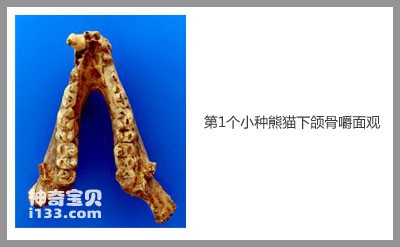
According to Mr. Pei Wenzhong’s statistics, a total of 79 small species of panda fossils were unearthed from Nityan Cave. 4 mandibles, specimen No. 1992 is the best preserved. The incisors, canines, premolars and molars on the jaws are clearly distinguishable; the rest are single teeth, a total of 73: 1 upper third premolar, 8 upper Fourth premolars, 11 upper first molars, 15 upper second molars, 7 lower fourth premolars, 10 lower first molars, 12 lower second molars and 9 lower third molars. These fossils are buried in the same layer as the Gigantopithecus fossils.
This is how the earliest small species of panda was discovered.
Why is it called Xiaozhong Panda?
The scientific name of the small species of panda was given by the famous paleoanthropologist Pei Wenzhong. The basis for his naming is as follows:
(1) The mandible of the first small species of panda (No. V.1992), its jaw body is shorter than other pandas (such as Panda barbari and living pandas); (2) The teeth of V.1992 have some primitive properties, For example, there are fewer wrinkles on the tooth surface, there is no attached cusp on the inner surface of the main cusp of the upper fourth premolar, and there is no enamel protrusion at the joint between the crown and the root, commonly known as a tooth band. This phenomenon can also be seen on other teeth; (3) The tooth surface area (length × width) of the lower second molar is smaller, about one-third of that of Papilio panda or living panda.
Based on the above analysis, Pei Wenzhong believes that the small pandas in Nityan Cave are obviously different from the Basian pandas and living pandas. Furthermore, this kind of panda lived earlier, that is, in the early Early Pleistocene (2 million years ago). At this point, Mr. Pei Wenzhong gave it a scientific name, Ailuropoda microta, based on its short stature and related characteristics.
The discovery and positioning of small species of pandas shine a bright light on the descendant relationship between primitive pandas and living pandas:
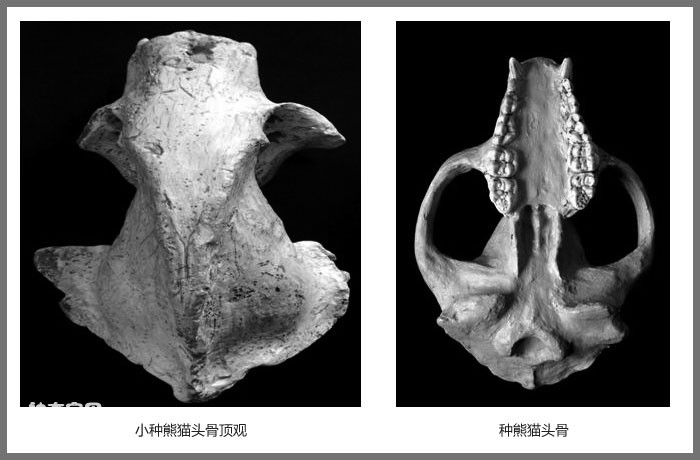
It is the direct ancestor of the living panda.
Regrettably, however, with the continuous discovery of fossils of small species of pandas in recent years, some media or researchers have called this small panda a "dwarf."
We know that every species on the earth has its own specific body and functions during the evolution process. If its body and functions are changed due to natural factors, it will no longer belong to the original species. As for the small species of panda, if its body and functions have changed through natural selection, then that's a different story. However this is not the case. In the research report "Fossils of Carnivora, Proboscidia and Rodents from Gigantopithecus Cave and Other Caves in Liucheng, Guangxi, 1987" by Pei Wenzhong, when describing the morphological characteristics of the small species of panda, he never mentioned its body and functions. The difference is that from the perspective of biological evolution, it is regarded as a species with normal development that was once widely and continuously distributed.
The author has successively observed the fossils of small species of pandas in multiple locations. Based on the comparison of measurement data and specimens of the same type, no abnormally developed individuals have been found. Moreover, the evolutionary system of its ancestor Eo-Panda and its descendant Panda Bastii is in the same line. of.
3. Wuling Mountain Panda
In the winter of 1978, a field team composed of Wang Linghong, Lin Yufen, and Chang Shaowu from the Institute of Vertebrate Paleontology and Paleoanthropology, Chinese Academy of Sciences, and Yuan Jiarong from the Hunan Provincial Museum, while conducting surveys in northwest Hunan, discovered a cave in Baojing County. Wulingshan panda fossils were discovered in a cave deposit in Paoshan.
The discovery of the Wuling Mountain panda
The Wuling Mountain Panda Origin is located in a limestone cave in Dongpao Mountain, Baojing County, Hunan Province. The cave is rich in sediments and contains many mammal fossils. According to Shao Wu, the chief technician who excavated the panda fossils in Wuling Mountain, it was probably a sunny day, and shortly after starting work after breakfast, a gibbon tooth was found in the yellow-gray sandy clay not far from the cave wall. When this specimen was unearthed, it was covered with light yellow sandy soil and was firmly cemented. The teeth were shining brightly under the flashlight, which doubled the interest. Wang Linghong, the leader of the group standing next to me, said: The living species of gibbon is a national first-level protected animal. In Pleistocene fossil sites in southern China, gibbons, pandas and great apes are often seen buried together. Will this phenomenon occur here? Pay more attention.
Chang Shaowu continued: Maybe it was a chance encounter, but panda fossils were indeed found in the stratum where the gibbons were unearthed. Unfortunately, the giant ape was not found.
The layers of panda fossils in Wuling Mountain and their distribution on the section
According to Wang Linghong’s description, the stratum containing Wuling panda fossils has the following four layers:
(1) Stalactite cover plate, containing Chinese mastodon fossils. Thick 30cm;
(2) Light brown loam. Thick 30cm;
(3) Light yellow silt soil, cemented by calcium. Contains Wulingshan panda, gibbon, saber-toothed elephant, rhinoceros, tapir, wild boar, deer, buffalo and other fossils, 30cm thick;
(4) Dark brown clay, no fossils. Visible thickness 10cm.
Positioning of Wuling Mountain Pandas
In order to accurately locate the panda fossils in Wuling Mountain, Wang Linghong, Yuan Jiarong and others observed the panda specimens unearthed from Bijiashan in Liuzhou, Guangxi and Longgu Cave in Jianshi, Hubei. They found that the materials from Wulingshan in Hunan, Longgu Cave in Hubei and Bijiashan in Guangxi differed in tooth morphology and The individuals are very consistent in size. Therefore, they studied the materials from these three locations (Dongbaoshan, Longgudong and Bijiashan) together. And put the V. of Dragon Bone Cave in Jianshi, Hubei Province. No. 5097 was used as the true specimen.
Wang Linghong, Yuan Jiarong and others believe that specimen V. The basic characteristics of 5097, such as the enamel wrinkles on the cusps and chewing surfaces of the teeth, are between those of the small panda and the Papilloma panda. Furthermore, the length and width of the upper fourth premolar and the length and width of the lower first molar are also between those of the small panda and the Papilloma panda.
Small panda
The upper fourth premolar is 20mm long and 13mm wide; the lower first molar is 18mm long and 21mm wide.
Wuling Mountain Panda
The upper fourth premolar is 24mm long and 17mm wide; the lower first molar is 23mm long and 25mm wide;
Pasteurized Panda
The upper fourth premolar is 28mm long and 19mm wide; the lower first molar is 27mm long and 29mm wide.
The above characteristics show that the pandas in Wulingshan, Jianshi and other places are a transitional member between the small species of panda and the Basin panda, and can be regarded as a new subspecies Ailuropode melanoleuca wulingshanensis (Latin meaning: Panda Wulingshan subspecies).
The geological age of the pandas in Wuling Mountain was determined by researchers to be in the late Early Pleistocene, 1.6 million years ago, based on the ancient nature of the associated fauna, such as the long-extinct mastodons, porcupines, piglets, etc.
4. Pasteurian Panda
The discovery of the Pasteurian panda
The first discovery of the Papilion panda was not in China, but in neighboring Myanmar.
In 1915, miners discovered some mammal fossils in a cave deposit in the Ruby mining area of Mogok, Myanmar. Among them is a complete upper jaw with multiple teeth preserved in the jaw. Researcher WoodwardEdward) believes that the morphological characteristics of this jaw specimen are very similar to those of living pandas in the mountainous areas of western China. However, there are differences. For example, the second premolar has a single root and the first premolar may be missing. These features are unique to the Mogok specimen. Considering that the fossils are buried in cave deposits and are of an earlier age, another species name should be given and called Ailuropoda baconi.
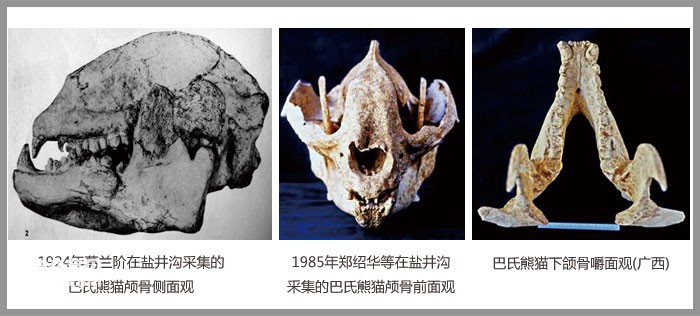
Change of species name of Papilion panda
In the autumn of 1921, American paleontologist Walter Granger traveled alone to the Three Gorges and discovered panda fossils in the limestone fissure accumulation in Pingba Village, Yanjinggou, Wanxian County, Sichuan. The materials included intact skulls, mandibles, and single teeth. In 1923, he and Matthew studied these specimens and found that the skull face was short, the top and frontal ridges were high, the zygomatic arch was thick and wide, the sagittal ridges and intervertebral grooves were well developed, and the occiput was flat and equal in shape. The waist is triangular; the teeth are closely arranged without gaps; the molars are wider than long, and the chewing surface is covered with enamel wrinkles of varying thicknesses.
These morphological characteristics of the Yanjinggou specimen are not only different from living pandas, but also different from the pandas in Mogok Cave, Myanmar. So far, researchers have classified it as a new species, called the cave panda (Ailuropoda fovealis).
In 1953, Colbert and E.H. et D.A. Hooijer re-study the panda materials from Yanjinggou, Wanxian County, Sichuan. They advocated merging the Yanjinggou specimens with the living pandas into the same genus. The same species, but considering that the Yanjinggou specimen has its own unique features, for example, the postorbital narrowing of the skull is not as significant as that of extant species, the sagittal crest of the skull is thicker and lower than that of extant species, and the occipital bone is slightly wider than that of extant species. These. The differences can only be regarded as regional differences and cannot be used as a basis for establishing a new species. Colbert and others used this as a reason to revise the cave species fovealis established by Gulen and others as a cave subspecies, namely Ailuropoda melanoleua fovealis (Latin meaning is the cave subspecies of panda).
The species name of Papilion panda returns
Shortly after the founding of New China, the South China Cave Expedition Team headed by Professor Pei Wenzhong unearthed a large number of panda fossils in hundreds of caves in Guangxi, Guangdong, Hunan, Hubei and other places. Materials include skulls, mandibles and teeth, among others.
In 1972, Wang Jiangke, in "Discussion on the Classification of Panda Species, Geohistorical Distribution and Evolutionary History", based on the information displayed on the panda fossils collected by the South China Cave Expedition Team, he clearly proposed that the Mogok in Myanmar studied by Woodward in 1915 Although the materials of the panda fossils are limited, the morphological characteristics of the teeth are consistent with those of the pandas from Yanjinggou, Wanxian County, Sichuan, and should be combined into one subspecies. According to the priority law of international nomenclature, the cave subspecies fovealis was changed to the bacon subspecies baconi, and finally became Ailuropoda melanoleua baconi. Its Chinese name also became the giant panda subspecies Pasteurella.
In 1993, Huang Wanbo praised Wang Jiangke's views in the article "The Evolutionary Significance of Panda Skull, Mandible and Teeth Characteristics", and the name "Basian subspecies" has been used to this day.
5. Living pandas
Physically and morphologically speaking, living pandas, except for being slightly smaller than the Pasteurian panda, have no differences in other aspects, such as diet, "clothing", behavioral patterns, etc., so I won't go into details here.
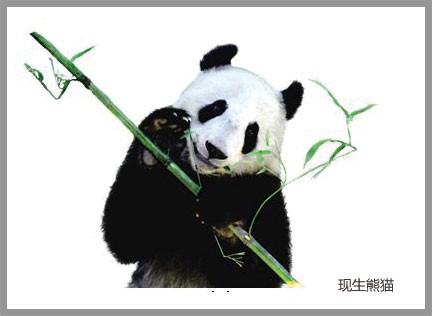
Most readers may not necessarily understand some of the physical structure and physiological functions of the living panda, a "pet" that is watched and loved by people all over the world. Here are a few examples.
False thumb
The panda looks bulky, but its fingers are very nimble. Grasp the bamboo pole with your "hand" like a human being, use your pseudo-thumb to rub down the bamboo leaves along the bamboo pole, collect a handful, and give it to your mouth for chewing. This surprisingly sensitive movement relies entirely on the function of the pseudo-thumb.
Zoologists have analyzed the panda's "finger" from an anatomical point of view and believe that in addition to the five phalanges in the normal position, the panda's "finger" also has a thumb---the pseudo-thumb. This pseudo-thumb is not a finger, and is fundamentally different from the extra sixth finger that humans occasionally have. The panda's pseudo-thumb is made up of sesamoid bones and has muscles connected to the metacarpal bones, which enhances the strength and flexibility of the pseudo-thumb and allows it to rotate inward. In a sense, the emergence of pseudo-thumbs, like the enlargement of the skull and the widening of the teeth, is also a specialized phenomenon, and its purpose is to eat bamboo. In contrast, the familiar black bears and brown bears do not grow false thumbs because they do not live on bamboo.
We know that the panda family has 6 members from 8 million years ago to the present. Do any of them have false thumbs? The author believes that the original panda is missing. Small species of pandas already have the prototype of a pseudo-thumb. From the Wulingshan panda to the Basin panda, their pseudo-thumbs gradually improved as they ate more bamboo. It is a pity that no pseudothumb fossil has been found yet. This may have occurred because it was too small to attract the attention of the excavators.
The author believes that the mystery of the pseudo-thumb fossil will be revealed in future excavations!
To sum up, from the beginning to the present panda, according to its systematic classification, there are 1 family, 2 genera, 4 species and 2 subspecies, namely:
Ailuropodidae Pocock, 1929
Ailurarctos Qiu et Qi, 1989
Ailurarctos lufengensis Qiu et Qi, 1989
Ailurarctos yuanmouensis Zong, 1991
Panda Ailuropoda (Alphonse Milne-Edwards), 1870
Small panda Ailuropoda microta Pei, 1987
Wulingshan panda subspecies Ailuropoda milanoleuca wulingshanensis
Wang et al., 1982
Ailuropoda milanoleuca baconi (Woodward), 1915
Living panda Ailuropoda milanoleuca (David), 1869
animal tags:
We created this article in conjunction with AI technology, then made sure it was fact-checked and edited by a Animals Top editor.